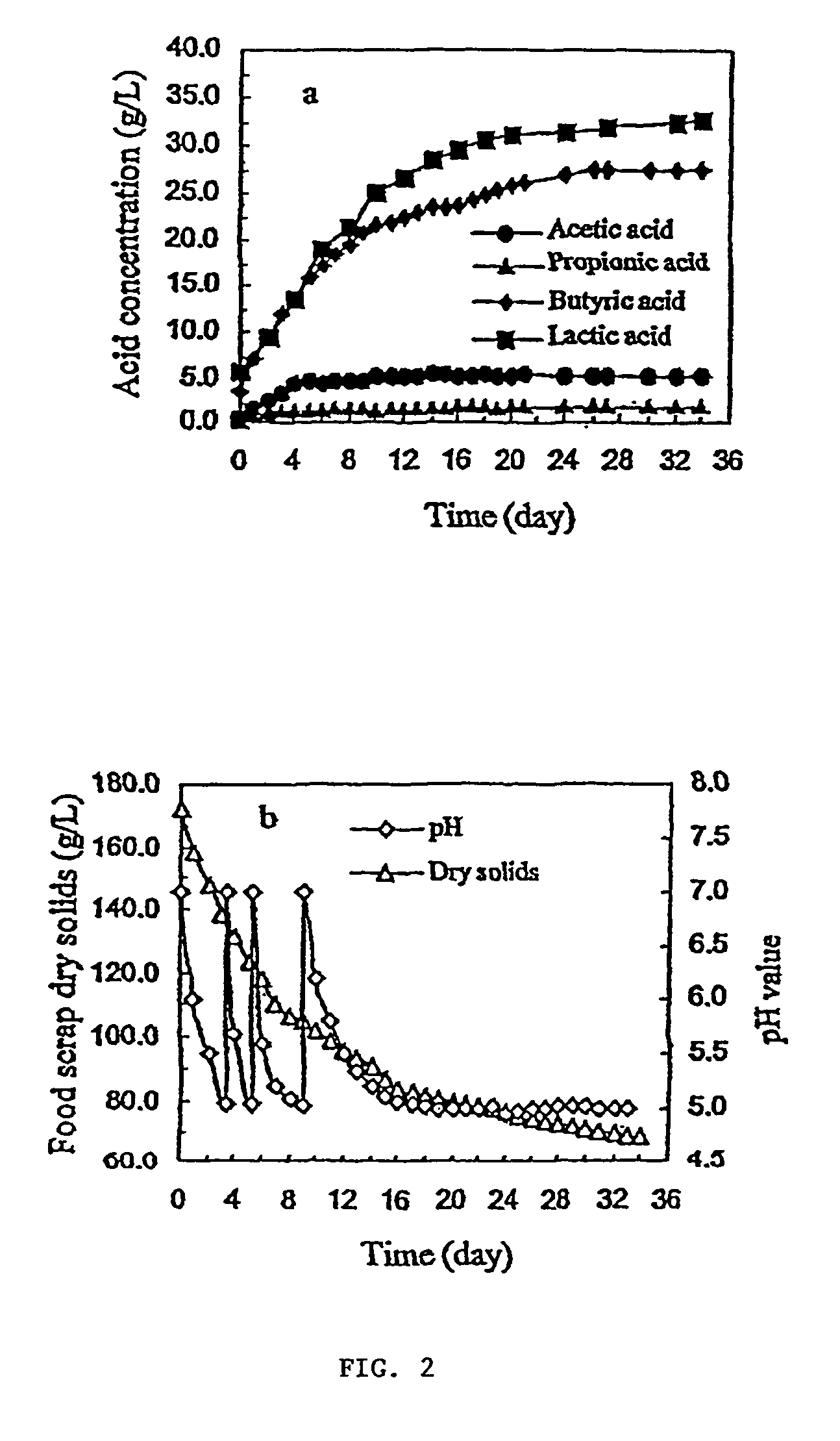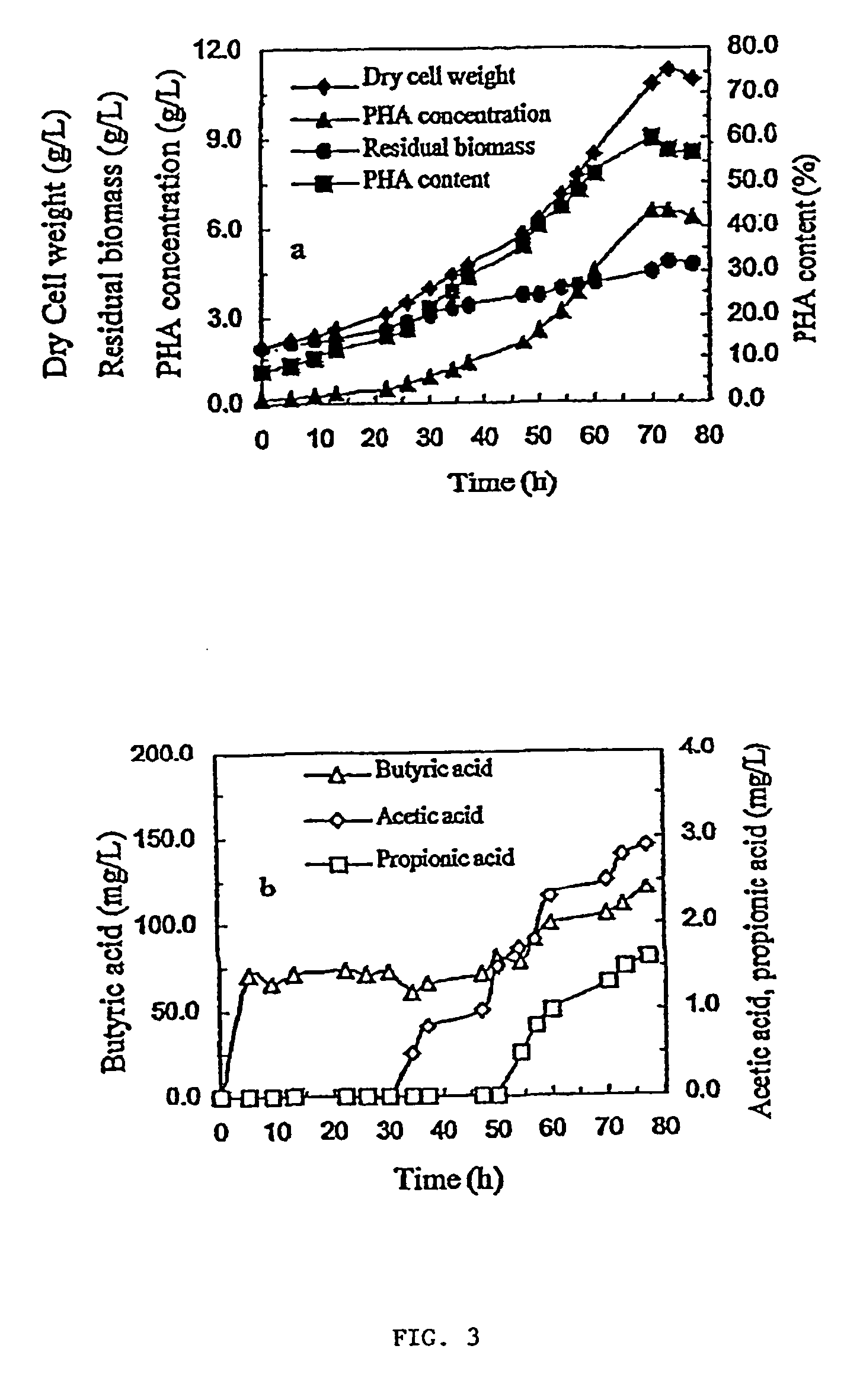Production of biodegradable thermoplastic materials from organic wastes
a biodegradable, organic waste technology, applied in the direction of biochemical equipment and processes, microorganism fixing/supporting equipment, apparatus sterilization, etc., can solve the problems of inability to directly utilize pha, complex organic wastes, and technological difficulties in coupling waste acidogenesis and pha synthesis steps, etc., to achieve reliable and efficient operation
- Summary
- Abstract
- Description
- Claims
- Application Information
AI Technical Summary
Benefits of technology
Problems solved by technology
Method used
Image
Examples
examples
[0017]Food scraps were collected from a local canteen, mixed with water in 1:1 (w / w), and blended to slurry. Anaerobic digestion of solid waste was conducted at 35° C. in a 5 L reactor with 3 L working volume. An inoculum for food waste acidogenesis was prepared by keeping food wastes under anaerobic conditions. The inoculum (25–30%, v / v) was mixed with fresh slurry to start anaerobic digestion. The slurry pH was first adjusted to 7.0 with 6 M NaOH, and raised to 7.0 after the pH dropped to about 5.0. No further pH control was implemented after the anaerobic digestion was coupled with PHA production.
[0018]Ralstonia eutropha ATCC 17699 was used for PHA production. The strain was maintained by monthly subculture on 2.0%-agar slants (pH 7.0) containing (per liter): 5 g yeast extract, 2.5 g beef extract, 5 g peptone and 5 g (NH4)2SO4. The same nutrient-rich medium without agar was also used for seed culture. The seed was prepared in 2 L flasks containing 500 ml medium in a rotary shaker...
PUM
| Property | Measurement | Unit |
|---|---|---|
| volume | aaaaa | aaaaa |
| volume | aaaaa | aaaaa |
| v/v | aaaaa | aaaaa |
Abstract
Description
Claims
Application Information
 Login to View More
Login to View More - R&D
- Intellectual Property
- Life Sciences
- Materials
- Tech Scout
- Unparalleled Data Quality
- Higher Quality Content
- 60% Fewer Hallucinations
Browse by: Latest US Patents, China's latest patents, Technical Efficacy Thesaurus, Application Domain, Technology Topic, Popular Technical Reports.
© 2025 PatSnap. All rights reserved.Legal|Privacy policy|Modern Slavery Act Transparency Statement|Sitemap|About US| Contact US: help@patsnap.com



